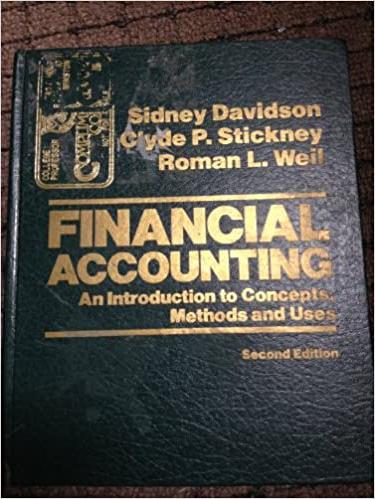Indicate the effects (increase, decrease, no effect) of the independent transactions below on (1) earnings per share.
Question:
Indicate the effects (increase, decrease, no effect) of the independent transactions below on (1) earnings per share. (2) working capital, and (3) quick ratio, where accounts receivable are included but merchandise inventory is excluded from "quick assets." State any necessary assumptions.
a Merchandise inventory costing \(\$ 240,000\) is sold on account for \(\$ 300,000\).
b Dividends of \(\$ 160,000\) are declared. The dividends will be paid during the next accounting period.
c Merchandise inventory costing \(\$ 410,000\) is purchased on account.
d A machine costing \(\$ 80,000\) and on which \(\$ 60,000\) depreciation had been taken is sold for \(\$ 16,000\).
e Merchandise inventory purchased for cash in the amount of \(\$ 7,000\) is returned to the supplier because it is defective. A cash reimbursement is received.
f 10,000 shares of \(\$ 10\) par value common stock were issued on the last day of the accounting period for \(\$ 15\) per share. The proceeds were used to acquire the assets of another firm composed of the following: accounts receivable, \(\$ 30,000\); merchandise inventory, \(\$ 60,000\); plant and equipment, \(\$ 100,000\). The acquiring firm also agreed to assume current liabilities of \(\$ 40,000\) of the acquired company.
g Marketable securities costing \(\$ 16,000\) are sold for \(\$ 20,000\)
Step by Step Answer:

Financial Accounting An Introduction To Concepts Methods And Uses
ISBN: 9780030452963
2nd Edition
Authors: Sidney Davidson, Roman L. Weil, Clyde P. Stickney





